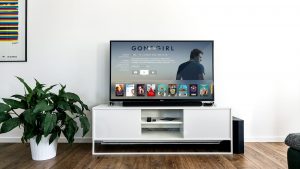The Future of Cable TV
It’s almost painful to think back to a time when streaming services like Netflix and Hulu were nonexistent. Many of us can remember growing up in front of the TV, fighting for the remote with our siblings and experiencing that feeling of despair when we missed our favorite show. Now, virtually all of our entertainment is instant, DVR-able, stream-able, and easily accessible just about anywhere. It’s pocketed, shared, recorded, and consumed at the touch of a screen. Smart devices and mobile technology have changed the game for traditional cable services—and people aren’t looking back. So, what does this mean for the future of cable TV?
The short answer: it doesn’t look good. One of the most troubling problems with traditional cable is that it uses an antiquated business model that represents a life of the past. While cable providers offer “bundles” of hundreds of channels at wallet-bending prices, consumer trends show a stronger preference for a more manageable and customizable package of entertainment that fits easily into their life. People expect that their entertainment conform to their individual needs and be consumable in a way that makes sense for them.
 Cable companies have had a long-held monopoly over the market, and consumers have had little choice in when, how, and at what cost they consumed their media. Cable providers are able to charge pretty much whatever they wanted, and many people have begun to feel trapped. As a result, many people have “cut the cords,” so to speak, and decided to opt out of cable completely. Not surprisingly, the number of “cord-cutters” has grown quickly in the past decade; but the number of “cord-nevers” is also steadily growing. Cord-nevers represent the majority of millennials who have not just abandoned the world of traditional cable, but have bypassed it entirely. Obviously, this has big cable companies scrambling to recruit new customers by tailoring their existing services to be more attractive, as well as finding new, more relevant services to offer.
Cable companies have had a long-held monopoly over the market, and consumers have had little choice in when, how, and at what cost they consumed their media. Cable providers are able to charge pretty much whatever they wanted, and many people have begun to feel trapped. As a result, many people have “cut the cords,” so to speak, and decided to opt out of cable completely. Not surprisingly, the number of “cord-cutters” has grown quickly in the past decade; but the number of “cord-nevers” is also steadily growing. Cord-nevers represent the majority of millennials who have not just abandoned the world of traditional cable, but have bypassed it entirely. Obviously, this has big cable companies scrambling to recruit new customers by tailoring their existing services to be more attractive, as well as finding new, more relevant services to offer.
So, what are cable companies doing to stay afloat? Well, simply put, they’re starting to listen to the masses. By offering streaming services, experimenting with usage-based pricing, and offering more customized plans and packages, they are able to appeal to newer trends and lessen the impact caused by streaming services.
Contrary to popular assumption, however, the rise of streaming services doesn’t necessarily signify the immediate and terminal end to major cable providers. Cable providers can still provide valuable infrastructure, and many have tried to retain their loyal customer base by offering services such as home security. As for the future of the cable business in general, well, it’s pretty much dead. Cable companies must adapt to survive, or they risk behind left behind entirely.
If cable TV wants to keep up with the ever-changing trends of consumer entertainment, they’ll have to embrace the use of social media alongside traditional programming. For example, programs like The Walking Dead utilize features like interactive Snapchat filters to stay relevant even after viewers are done watching the latest episode. Smart TVs have also changed the way people consume media, and has transformed the viewing experience. With streaming services like Netflix, Hulu, and HBO Now built into the TV, people are able to bypass cable and cable boxes completely, rendering traditional TV virtually obsolete. In many ways, this trend shift has been deemed the “golden age” of entertainment, causing all of us to wonder what is next for the future of cable TV.






